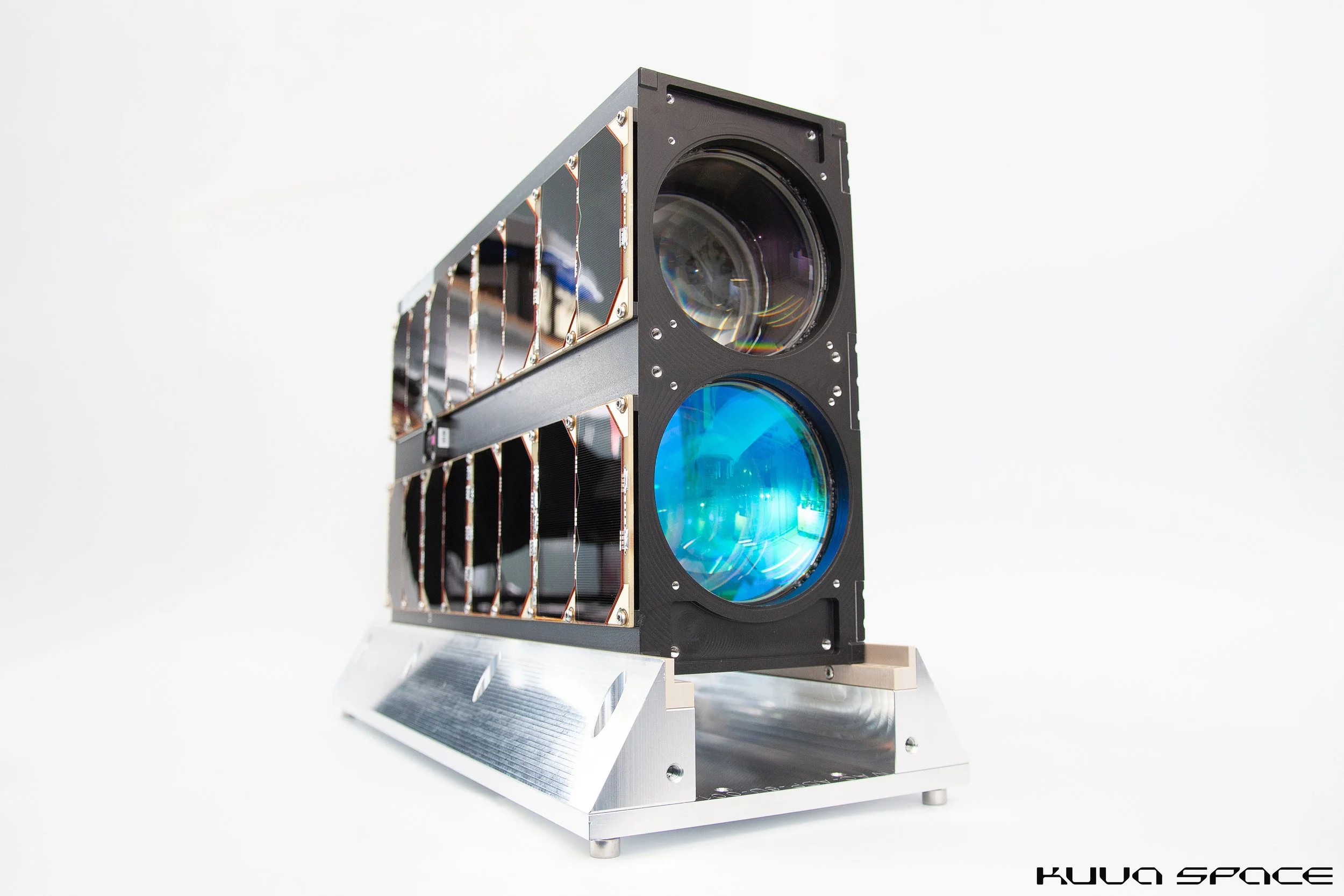Kuva Space Successfully Launches its Hyperspectral Microsatellite Hyperfield-1 with SpaceX to Demonstrate its Commercial Services
Finnish hyperspectral microsatellite and AI-powered insights company Kuva Space has successfully launched its first commercial microsatellite mission, Hyperfield-1, on SpaceX’s Falcon 9 smallsat rideshare mission from Vandenberg Space Force Base in California, U.S. First contact has been made with the satellite. This marks the initial stage of Kuva Space’s large constellation, which aims to provide daily observation by 2027 and gapless subdaily global monitoring with 100 satellites by 2030.
Kuva Space’s mission is to improve life on Earth with its AI-powered spaceborne technologies. Its commercial microsatellite, equipped with a patented hyperspectral camera, offers unique acquisition modes that allow the company to distinguish Earth’s material and its conditions through its distinct spectral signature.
Kuva Space’s advanced AI-powered analytics platform automatically transforms its proprietary hyperspectral data and combines it with third-party data, where needed, to create decision-ready insights within 15 minutes. As a result, the company can monitor and identify crop species, growth stages, biomass health, forecast yields and harvest times, biodiversity, algae blooms, water quality, and illegal vessel activities. These insights enable organizations to cost-effectively monitor, identify, and forecast changes and their impact in near real-time, making decision-making more effective.
As a fully integrated space company, Kuva Space provides insights-as-a-service to move away from the prevalent pay-per-use model. The company’s subscription business model, built around daily hyperspectral observations and an automated AI-driven analytics platform, will change how customers, especially non-space firms, harness spaceborne solutions to effectively execute ESG strategies, enhance situational awareness for security and safety, and optimize resource management.
“Hyperfield-1 launch is a critical milestone for the Kuva Space’s mission. The immense learning the team garnered in the past two years, both on satellite and AI-powered processing pipeline and customer needs, is giving us a firm foundation to build world-class services,” says Jarkko Antila, CEO of Kuva Space. “When the Hyperfield-1 satellite commissioning period ends, we will open early access to a selected group of customers to test, validate, and co-create domain-specific services.”
“Our early access program will help customers learn firsthand how novel hyperspectral insights can make their business more climate resilient,” he continues.
Using satellite data in organizations has been challenging due to accessibility and cost issues – either it has been too expensive, or the data isn’t relevant or accurate enough. Kuva Space automates its processing chains with advanced AI, which means companies get constantly updated decision-ready insights in the areas they need them most so they can leverage timely, accurate, and affordable information.
Unique to the industry, Kuva Space’s gapless satellite monitoring can be tuned in orbit to optimize for a specific use case across a wide range of application requirements, giving it the flexibility to serve various industries simultaneously. Additionally, the company aims to integrate in-orbit edge computing capability and Sat-to-Sat to improve in-orbit processing and reduce delivery times of analytic insights to first responders within its second generation.
“Our AI-powered service production process is put to test for the first time with our proprietary hyperspectral data with the launch of Hyperfield-1. This complex process spans tailored data acquisition, in-orbit data pre-processing, and on-ground processing to produce hypercubes, which will then be automatically translated into industry-specific insights. We anticipate fine-tuning the end-to-end process as we gather more data and learnings during this year,” states Tuomas Tikka, CTO of Kuva Space.
Kuva Space co-developed the camera technology in Hyperfield-1 with VTT Technical Research Centre of Finland. The second satellite, Hyperfield-1B, will be deployed in Q1 2025 as part of the ESA InCubed program. Later in 2025, the second generation of Hyperfields will be launched with enhanced specifications.
